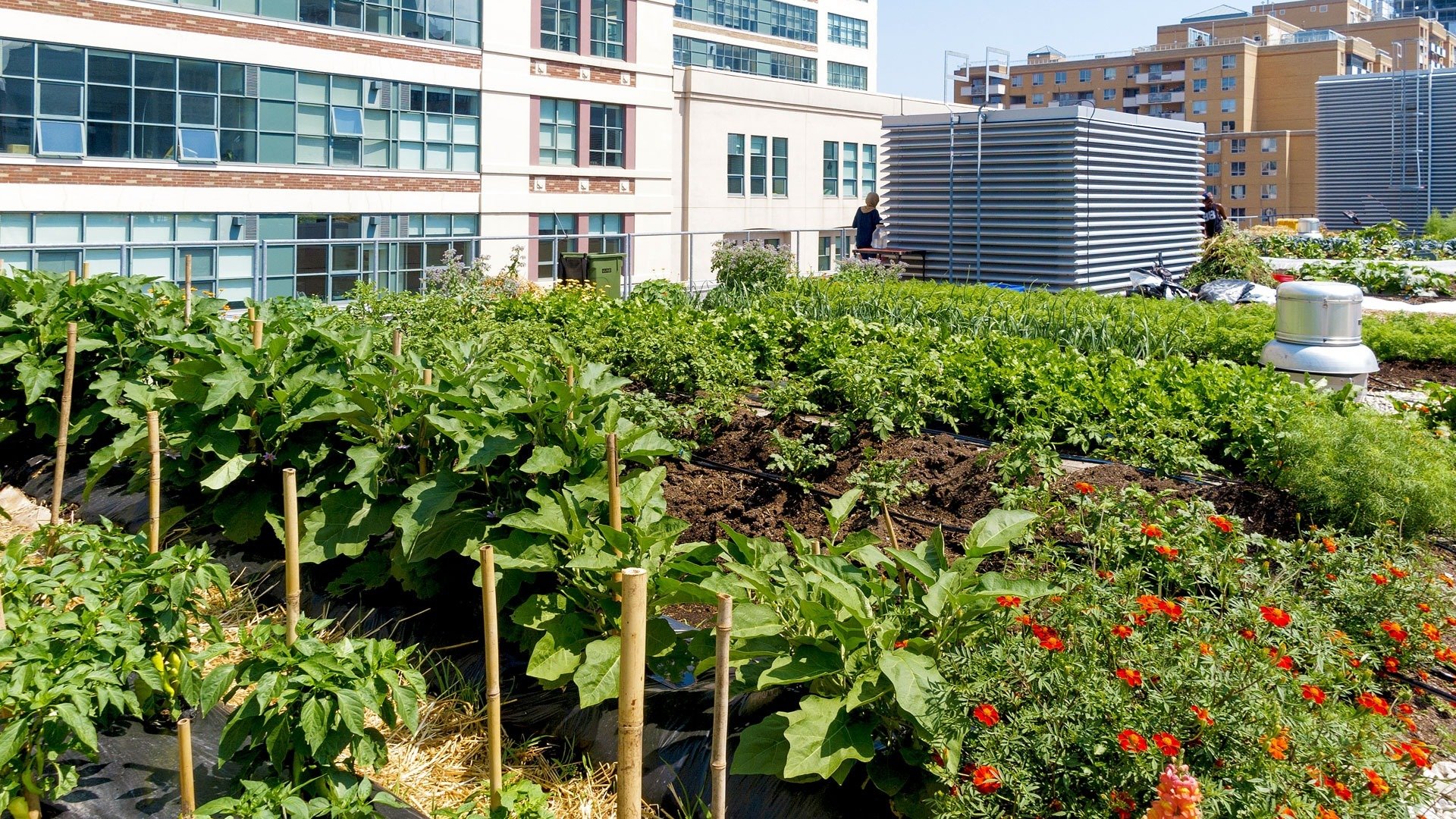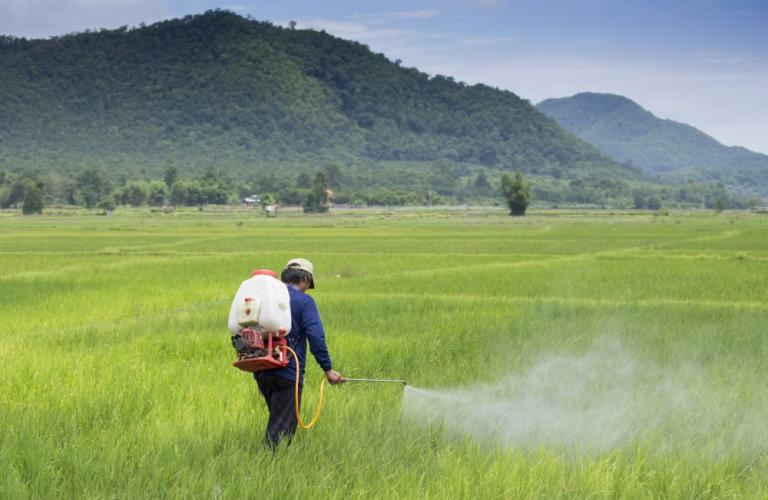Urban Agriculture Cultivating Food In Urban Environments
Urban agriculture is on the rise globally, and it is an exciting trend that deserves our attention. With increasing concerns about food security, sustainability, and the environmental impact of traditional farming methods, urban agriculture offers a promising solution. In this post, we will explore the concept of urban agriculture, its benefits, and ideas for implementing it in different settings.

Urban agriculture refers to the practice of growing and cultivating food within urban areas. It encompasses various farming techniques, including rooftop gardens, vertical farming, community gardens, and urban aquaponics. The goal is to bring food production closer to where people live and consume food, reducing transportation costs and carbon emissions.
One of the primary benefits of urban agriculture is increased food security. By growing food locally, communities can rely less on distant farms and vulnerable supply chains. This resilience becomes particularly crucial during times of crisis, such as natural disasters or pandemics.
Additionally, urban agriculture contributes to the sustainability of our cities. It promotes biodiversity, reduces the urban heat island effect, improves air quality, and mitigates climate change by sequestering carbon dioxide. Furthermore, it provides opportunities for social interaction and education, fostering community cohesion and food literacy.
Urban agriculture can take various forms depending on the available space and resources. Rooftop gardens are an excellent option for buildings with flat roofs, providing additional insulation and reducing energy consumption. Vertical farming, which utilizes stacked layers of crops in vertical structures, is ideal for limited space situations.
Community gardens, on the other hand, involve multiple individuals or families collectively managing a piece of land. They facilitate the sharing of knowledge and resources and often serve as recreational spaces for the community. Community gardens promote social integration and offer opportunities for people to connect with nature and each other.
Urban aquaponics is another innovative form of urban agriculture that combines fish farming (aquaculture) and soilless plant cultivation (hydroponics). This symbiotic system results in nutrient-rich water from the fish tanks being circulated to nourish the plants, while the plants filter the water, creating a sustainable cycle.
What is urban agriculture all about? It's a dynamic and diverse movement that has the potential to transform our cities. By integrating food production into urban areas, we can tackle pressing issues such as food insecurity, environmental degradation, and social disconnection.
Ideas For Implementing Urban Agriculture
Implementing urban agriculture requires careful planning and consideration of various factors. Here are some ideas to inspire you:
- Transform underutilized spaces: Identify vacant lots, rooftops, or unused structures that can be converted into urban agriculture sites. Collaborate with local organizations or municipalities to secure land access.
- Establish community gardens: Encourage community participation by creating shared garden spaces where individuals or families can grow their own food. Provide training and resources to support their efforts.
- Integrate with green infrastructure: Combine urban agriculture with other sustainable initiatives, such as green roofs, rainwater harvesting, or composting. This synergy enhances overall ecological benefits.
- Engage schools and educational institutions: Implement urban agriculture programs in schools to educate children about food production, nutrition, and environmental stewardship. These initiatives can empower the younger generation to become advocates for sustainable practices.
- Promote rooftop gardens and vertical farming: Encourage building owners to install rooftop gardens or vertical farming systems, utilizing the available vertical space for agricultural production.
- Support urban farmer training: Provide training programs and resources for aspiring urban farmers. These programs can teach essential skills and knowledge required for successful urban agriculture.
- Stimulate entrepreneurship: Foster an ecosystem that supports urban agriculture entrepreneurs. Offer financial incentives, business mentoring, and access to markets to encourage the growth of urban farming businesses.
- Collaborate with local restaurants and markets: Establish partnerships with local food establishments to create direct supply chains between urban farmers and consumers. This collaboration ensures a reliable market for urban agricultural produce.
- Implement policy changes: Advocate for favorable zoning regulations and incentives that promote urban agriculture. This can involve lobbying local governments to prioritize urban agriculture in their urban planning strategies.
- Encourage research and innovation: Invest in research and development of urban agriculture technologies and practices. This will drive continuous improvement and optimization of urban farming methods.
These are just a few ideas to get you started. The possibilities for implementing urban agriculture are endless, and it is essential to tailor your approach to the specific needs and opportunities of your community.
Recommendations For Successful Urban Agriculture
For urban agriculture to succeed, certain factors need to be considered and prioritized:
- Community involvement: Engage the community from the planning stages to ensure their needs and preferences are reflected in the urban agriculture initiatives.
- Access to resources: Ensure that aspiring urban farmers have access to affordable land, water, seeds, and other necessary resources to establish and maintain their farms.
- Education and training: Provide comprehensive training and educational programs to develop the skills and knowledge of urban farmers. This can include workshops, courses, or mentoring opportunities.
- Sustainable practices: Emphasize the use of sustainable farming techniques, such as organic farming, water conservation, and minimal reliance on synthetic pesticides or fertilizers.
- Collaboration and partnerships: Foster collaborations between urban farmers, local businesses, educational institutions, and government agencies. These partnerships can provide support, networking opportunities, and potential markets for urban agricultural produce.
- Recognition and support: Acknowledge the contributions of urban farmers and promote their products through marketing initiatives and community events. This recognition can help create a sense of pride and encourage more individuals to embrace urban agriculture.
Exploring the Potential: A Listicle of Urban Agriculture Benefits
Let's dive deeper into the benefits of urban agriculture:
- Food security: Urban agriculture reduces a community's dependence on external food sources and increases food resilience during crises.
- Sustainability: By producing food locally, urban agriculture minimizes transportation-related greenhouse gas emissions and promotes sustainable farming techniques.
- Improved air quality: Urban agriculture helps filter air pollutants and promotes greener and healthier urban environments.
- Community development: Urban agriculture fosters community cohesion, social integration, and pride in local food production.
- Education and awareness: By engaging individuals in the process of growing food, urban agriculture promotes knowledge about nutrition, healthy eating, and sustainability.
- Enhanced biodiversity: Urban agriculture creates opportunities for wildlife habitat creation and enhances the ecological diversity within cities.
- Green space creation: Rooftop gardens and community gardens contribute to the creation of green spaces, which promote mental and physical well-being.
- Economic opportunities: Urban agriculture can stimulate local economies by creating jobs, supporting small businesses, and reducing the reliance on imports.
- Waste reduction: Composting organic waste from urban agriculture can reduce the amount of waste sent to landfills and contribute to nutrient cycling.
- Health and well-being: Access to fresh, locally grown produce can improve the dietary choices and overall health of urban communities.
Answering Your Questions: Common Urban Agriculture Queries
Let's address some common questions about urban agriculture:
- Q: Is urban agriculture only suitable for large cities?
- A: Urban agriculture can be adapted to any urban setting, regardless of its size. It can be implemented in large metropolitan cities, mid-sized towns, or even small neighborhoods.
- Q: How much space is needed for urban agriculture?
- A: The space required for urban agriculture depends on the specific farming technique. Vertical farming and rooftop gardens utilize vertical space, while community gardens may require more extensive parcels of land.
- Q: Are there any legal or zoning restrictions on urban agriculture?
- A: Legal and zoning restrictions vary depending on the city and country. However, many municipalities are recognizing the importance of urban agriculture and are revising regulations to enable its growth.
- Q: Can urban agriculture be profitable?
- A: While profitability varies depending on various factors, such as the scale of operation and market demand, urban agriculture can be a viable and profitable endeavor for individuals and businesses.
- Q: How can I get started with urban agriculture?
- A: Start by researching local urban agriculture initiatives and resources in your area. Join community gardening groups, attend workshops or webinars, and reach out to local experts for guidance.
Summing It Up: The Potential of Urban Agriculture
Urban agriculture offers a multitude of benefits to cities and communities. By bringing food production closer to urban areas, we can create more sustainable and resilient food systems. Urban agriculture promotes food security, biodiversity, social integration, and environmental sustainability.
Implementing urban agriculture requires thoughtful planning, community involvement, and supportive policies. Whether it's establishing community gardens, rooftop farms, or vertical farming systems, every effort contributes to a greener and healthier urban future.
So, let's embrace the potential of urban agriculture, and together we can transform our cities into vibrant, self-sufficient, and sustainable food-producing hubs.




Post a Comment for "Urban Agriculture Cultivating Food In Urban Environments"